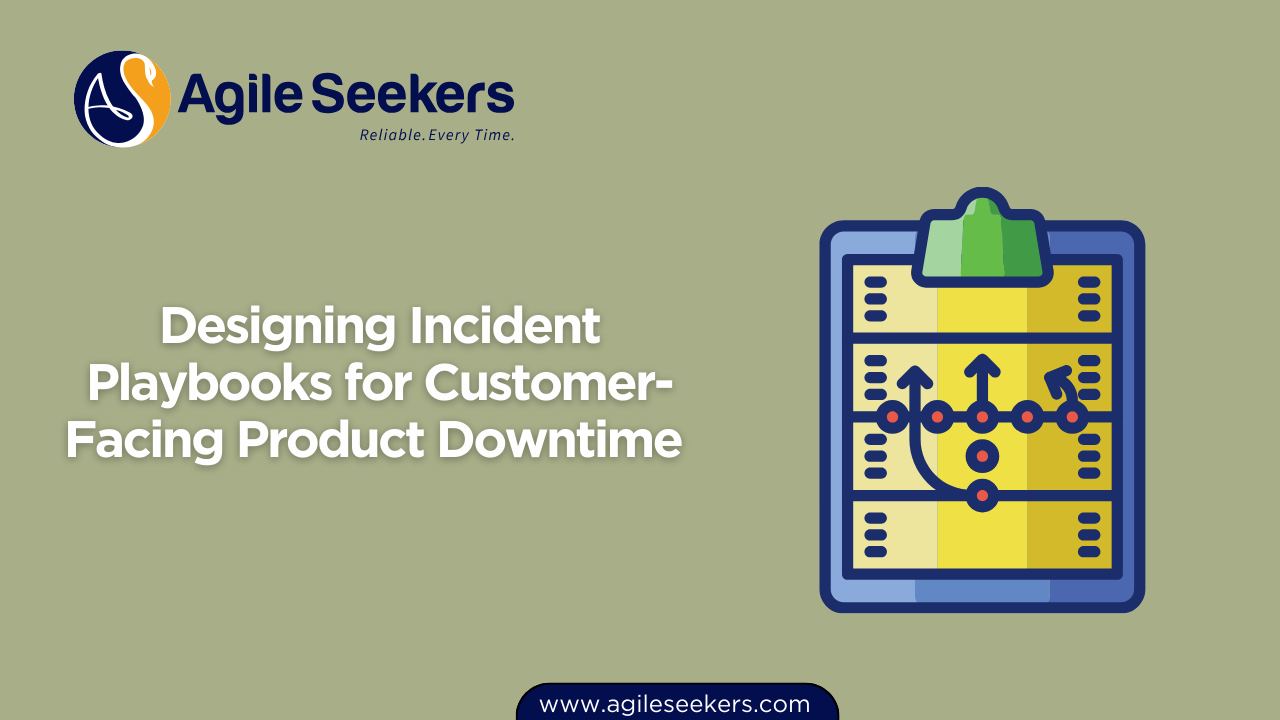Designing Incident Playbooks for Customer-Facing Product Downtime

When customer-facing systems go down, even briefly, the impact is immediate and wide-reaching. Revenue takes a hit, trust erodes, and customer support is flooded with tickets. How a product team responds in those first few minutes can determine the scope of damage—or how quickly the brand recovers. That’s where a well-structured incident playbook makes a critical difference.
This post walks through the key principles of designing effective incident playbooks for customer-facing downtime, emphasizing clarity, accountability, and continuous improvement. Whether you're managing a SaaS platform, an eCommerce site, or a digital app, a proactive playbook design can reduce chaos and preserve customer confidence.
Why You Need a Downtime Playbook
Most engineering teams are familiar with the idea of runbooks or response plans, but many stop at basic checklists. A downtime playbook goes further—it documents step-by-step actions, communication protocols, decision-making criteria, and escalation paths during incidents that directly impact users.
It’s not enough to rely on intuition or tribal knowledge when systems crash. A playbook ensures:
- Consistent response patterns across teams
- Clear responsibilities to avoid duplication or confusion
- Fast and transparent updates to customers and stakeholders
- Lessons are captured post-incident to improve future responses
Key Components of a Customer-Facing Incident Playbook
1. Incident Classification Framework
Start by defining severity levels. Not all downtime events require the same response effort. A structured classification helps prioritize actions based on impact. For example:
| Severity | Impact Description | Response SLA |
|---|---|---|
| SEV-1 | Complete outage for all users | Immediate (0-5 min) |
| SEV-2 | Partial functionality lost | Within 15 min |
| SEV-3 | Intermittent or low-impact issue | Within 1 hour |
Teams aligned with PMP certification training will recognize this as a standard risk and issue classification tactic aligned with response SLAs.
2. Incident Roles and Responsibilities
Assign specific roles to individuals or teams ahead of time:
- Incident Commander: Owns coordination and ensures response efforts stay on track
- Communications Lead: Sends timely updates to customers, stakeholders, and internal channels
- Technical Lead: Owns diagnostics and recovery actions
- Support Liaison: Bridges between customer support and engineering
This approach supports Agile product management principles. Product Owners trained in the SAFe Product Owner/Manager certification model often lead or collaborate closely with response teams to assess customer impact and prioritize recovery efforts.
3. Standard Operating Procedure (SOP) for Response
A good playbook includes pre-defined steps such as:
- Detection and classification (manual or via monitoring)
- Stakeholder notification (automated emails or dashboards)
- Containment (e.g., traffic rerouting, disabling impacted features)
- Root cause investigation
- Customer communication via status pages and emails
- Resolution confirmation and rollback procedures if needed
- Post-incident review scheduling
Tools like PagerDuty, Opsgenie, and Statuspage can be integrated to automate parts of this flow, improving response time and reducing manual load.
Communication Protocols: Transparency Without Panic
Transparency builds trust. Customers don’t expect perfection, but they do expect clarity and honesty. Your playbook should include:
- Templates for status page updates
- Customer-facing FAQs and macros for support teams
- Guidelines for social media messaging
Use non-technical language for public updates. Internal logs can use detailed technical terms, but customer-facing messaging should focus on what users are experiencing, what you're doing, and what comes next.
Monitoring and Detection Integration
Detection is the trigger for execution. Your monitoring stack should support:
- Real-time alerts (with minimal false positives)
- Threshold-based triggers tied to user-impacting KPIs
- End-to-end synthetic checks to simulate user journeys
This is especially relevant for large-scale digital products with platform-level telemetry and metrics tracking. If you're building API-heavy services, incident response can benefit from Google SRE incident response practices.
Customer Recovery Actions: Beyond Fixing the Bug
The incident doesn’t end when the system is back up. Your playbook should include:
- Proactive outreach to impacted users
- Apology or compensation policies (where applicable)
- Education materials if users need to take recovery steps
For example, if session tokens were lost, users may need to log in again. Communicate clearly and with empathy to reduce frustration.
Postmortem and Continuous Learning
Don’t skip the retrospective. Every incident is a chance to improve detection, tooling, training, and communication.
Ensure post-incident reviews are:
- Blameless—focus on process gaps, not individual mistakes
- Time-boxed—held within 48 hours of incident resolution
- Shared—distribute lessons across teams via internal wikis or brown-bag sessions
Include a section in your playbook outlining how incident reports are written, reviewed, and followed up with action items.
Versioning and Accessibility
Your playbook is only useful if it’s updated and accessible. Treat it as a versioned document:
- Track changes and approvals
- Store it in a shared workspace (e.g., Confluence, Notion, GitHub)
- Include a “last updated” timestamp and owner contact
Regular fire drills or chaos engineering experiments can validate whether teams can follow the playbook under real pressure.
How SAFe and PMP Practices Strengthen Your Playbook
If your organization follows structured frameworks like SAFe POPM training or PMP certification guidelines, you already understand the importance of risk management, escalation paths, and stakeholder engagement.
These methodologies help reinforce:
- Clear ownership structures
- Defined roles and responsibilities during uncertainty
- End-to-end visibility from incident detection to business impact analysis
Combining traditional project governance with Agile response patterns gives your team both structure and flexibility—a critical combo for real-time incidents.
Final Thoughts
A customer-facing incident playbook isn’t just for engineering. It’s a cross-functional asset that involves product managers, operations, support, comms, and leadership. When used well, it not only shortens downtime but also strengthens customer trust and internal collaboration.
Investing in your playbook now pays off when things go wrong. Because the real test of your product isn’t whether it breaks—it’s how you respond when it does.
Also read - Productizing AI Capabilities: Managing Data Drift and Model Decay
Also see - Integrating Scrum with CI/CD Pipelines for Faster Delivery




















